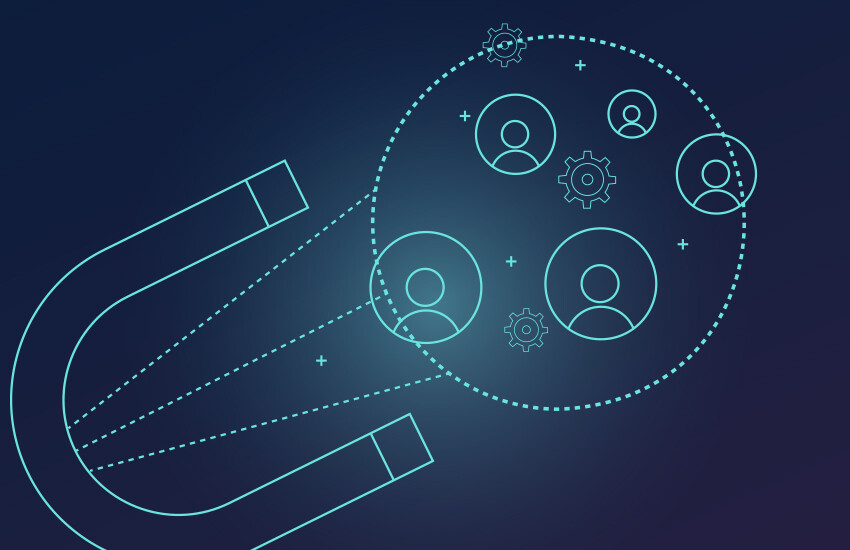Driver recruitment and retention is a massive, ongoing challenge facing all leaders in the transportation industry. Last year, the United States saw a record shortage of 80,000 truck drivers and turnover rates hovered around 90%. Beyond the obvious reasons for drivers leaving (pay, long hours, incomplete training), one issue that often goes unnoticed is poor, inefficient communication.
Holding on to outdated, clunky technology systems is a main perpetrator for poor communication and a quick way to lose talented workers. Systems that office teams and drivers rely on for communicating are often slow and difficult to use.
Having a mobile workforce requires effective communication tools to relay messages. When communication channels aren’t updated or prioritized, drivers can be easily confused when information is coming from disparate systems.
Communication problems inevitably lead to mistakes that create unnecessary stress for drivers and increase their likelihood to quit. Improving visibility of communications by integrating the messaging across systems and devices can solve this problem.
Improving Dispatch-to-Driver Communication
Information sharing needs to be efficient and accurate to get the job done and help drivers feel more connected to their dispatchers as well as to others within the company.
Drivers spend most of their working time alone – void of face-to-face interactions and breaks or lunches spent together with coworkers. Many spend up to 300 days out of the year on the road. They’re also working long hours — some more than 70 hours over an eight-day period. Feelings of isolation and disconnectedness can lead to unhappiness, ultimately resulting in drivers looking elsewhere for employment.
It’s time for change. Simple shifts in communication, made possible by modern technology solutions, enable smarter, faster ways for sharing information that helps make drivers feel more connected to the operations team even when they’re away.
Small changes that make a big difference
There are technology platforms that address the communication and messaging challenges that motor carriers and drivers experience with traditional TMS and back-office systems.
Here are just a few ways technology can improve communication and, in turn, improve driver retention:
- A single source of truth: Historically, dispatchers had to send messages to drivers through corporate devices in trucks and mobile applications – typically two separate streams of communication to monitor and manage. This can feel overwhelming and become stressful, especially when messaging threads are lost, unavailable, or overlooked. Now, with capabilities to merge the message streams from in-cab and SMS communications, all communications can be centralized in one place to have better visibility and awareness of driver status.
- Increased visibility: Fleets can increase visibility by tracking conversations in a more organized manner. For example, they can organize drivers into groups to track conversations and get visual and audio cues that alert dispatchers and drivers when new messages are received, so they don’t have to keep manually checking for new updates.
- Customized by driver: Not every driver operates in the same way, so having a customized experience – something tailored to them – can make them feel understood and appreciated. Modern platforms allow everyone to customize their workflows down to an app-by-app and driver-by-driver level to create in-cab experiences with technology that best suit their specific business objectives.
Other simple and more personal changes can make a big impact. For example, fleet managers who take the time to remember and recognize small things like birthdays or work anniversaries – even thanking veterans for their service on Memorial Day – stand out to drivers and foster healthier, more supportive relationships. Moments of recognition take a minute to do but can have a lasting, positive impact and influence.
How Motorcity Systems Can Help
Good communication can make the difference in keeping or losing talented drivers. Relationships will improve when fleet managers and dispatchers are in lockstep with drivers and have a communication flow that serves the needs of all parties. Better relationships mean higher job satisfaction and willingness for drivers to stay.
ROLLER™ is a driver-focused mobile application from Motorcity that simplifies driver messaging, document scanning, and other mission-critical tasks. Fleets that use the app can realize immediate ROI by deploying the cloud-based solution on iOS and Android devices.
Powered by Motorcity’s TORQUE Integration Network, ROLLER offers a fully modular approach to instant messaging, document scanning, and other essential and extended mobile workflows. The custom configuration and workflows of ROLLER are designed to meet customer needs based on the attributes they define.
ROLLER is further enhanced with RELAY™, a real-time messaging solution from Motorcity that connects drivers and dispatch through a single, unified system. As soon as documents are scanned with ROLLER, the connected systems provide an instant review and feedback loop for customers who want this capability.
Combining ROLLER with RELAY gives drivers an easy-to-use driver-to-dispatch communications platform that connects with fleets’ existing systems. The robust, integrated platform features messaging, document scanning, message routing capabilities, and more.
Download our free industry guide, Clear Capacity Hurdles with Driver & Trailer-Focused Technology, or request a demo of our ROLLER mobile app and RELAY messaging system to learn more about the solutions that can help improve driver retention and asset utilization.
Interested? Let’s Talk!
Contact one of our experts today with your software, pricing, and purchase questions. We’re here to help!
